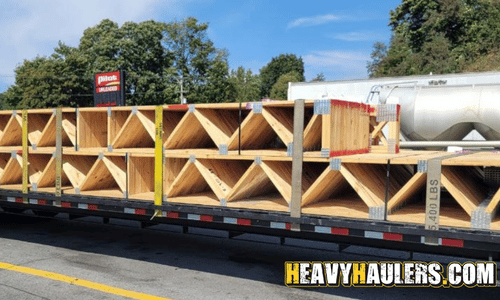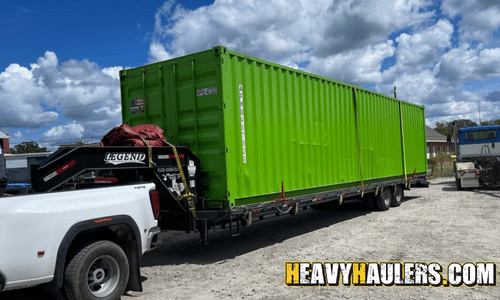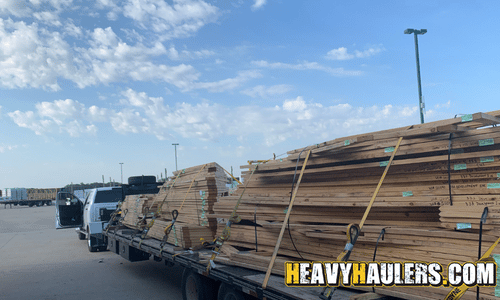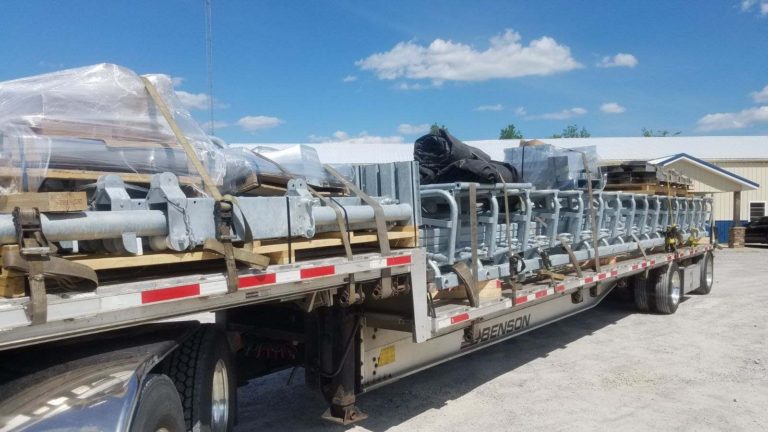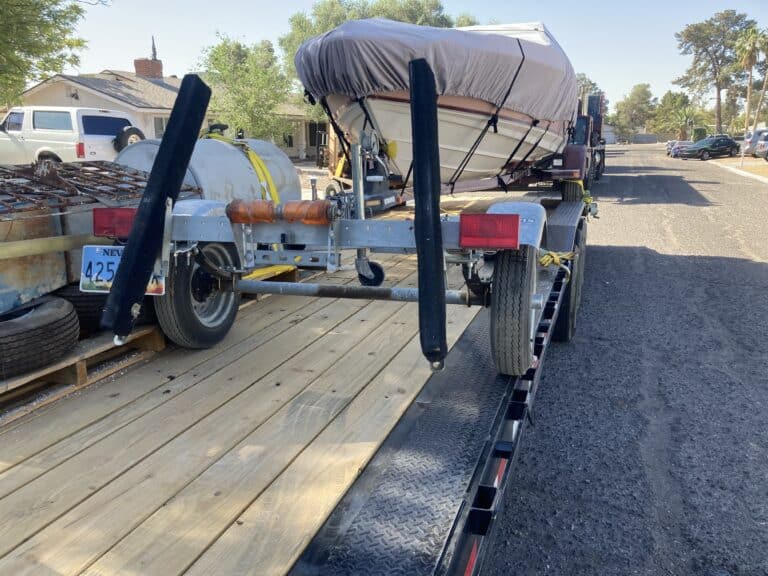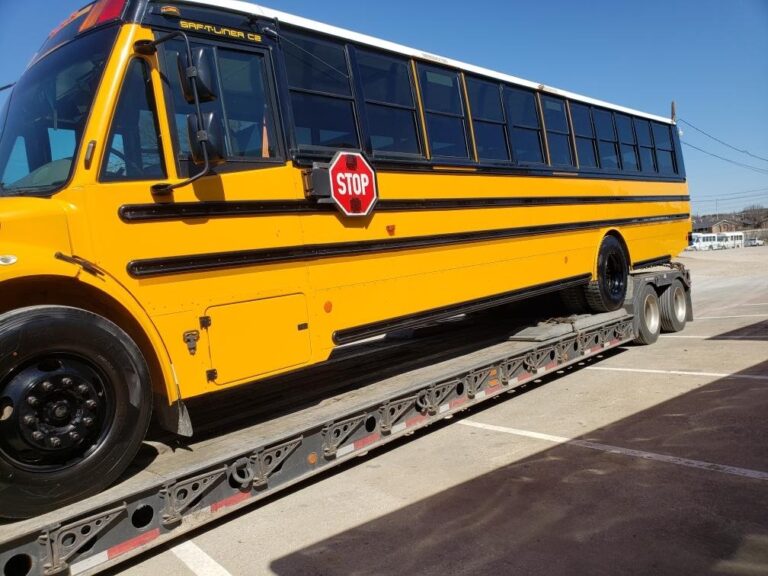How Do You Load Equipment That You Can’t Drive Onto a Trailer?
William Thomas
Senior Logistics Manager
The safe and legal transportation of heavy equipment doesn’t stop once you turn on the machines. Securing heavy loads on the road causes inspections and checks, especially when traveling long distances. Industry safety standards recommend inspection once during the first 50 miles of transport, once every 150 miles or once every 3 hours and at every change of duty or change of driver station. Having the proper load and
delivery assistance is imperative to safe transport.
Specialized transport trailers make it easier to safely haul equipment from state to state. Loading and connecting a trailer may be a hard task, especially if the heavy equipment cannot be driven onto the transportation trailer. It is important to ensure safe and efficient transport. Before loading the trailer, it is important to determine the maximum weight capacity of the trailer and the net weight of the heavy equipment to be transported. This will help arrange the load for weight distribution and avoid unpleasant surprises on the road. If you’re unsure of the best way to load or attach your trailer, remember most trailer rental businesses will assist first-time renters. Let’s look at some techniques that are used to load heavy equipment that you can’t drive onto a trailer.
The use of machinery to lift heavy machinery onto and then off transport vehicles and conveyances is known as “lift on and lift off”.
Lift On and Lift Off Technique
The use of machinery to lift heavy machinery onto and then off transport vehicles and conveyances is known as “lift on and lift off”. This method of moving heavy equipment is quite straightforward when compared to other approaches.
Types of machinery that are frequently used include:
Forklift
This industrial vehicle has a long platform that can be lowered to pick up something on the ground or below it, and it is commonly used to lift and move loads in warehouses, factories, and construction sites. Forklifts usually come in different sizes, and they have recently gone through a lot of changes to make them work better and lift more.
Trailer Cranes
As the name suggests, a trailer crane is a customized trailer with a self-moving crane that can lift, lower, and move heavy equipment. They can be used to move and set loads that can’t be disassembled and reassembled and are too heavy for truck-mounted cranes.
Cranes are often set up on rear outriggers to keep the structure from bending and to provide the most stable and flexible place to operate. Most cranes can turn about 180 degrees, while more advanced cranes can turn a full 360 degrees.
Telehandlers
This versatile lifting machine, which is also called a “telescopic handler,” is often used in the heavy equipment transportation industry to lift and move heavy items between levels.
Most modern telehandlers have telescopic booms with different lifting tools and attachments, like buckets or bucket grabs, that help them do their jobs much better.
Roll On and Roll Off Technique
The roll-on/roll-off technique is the simplest and fastest way to move and load machinery and equipment onto a trailer, but only if the equipment can be rolled. Depending on how heavy the machine is, moving large machinery that is wheeled but cannot be driven is not simple but could be executed by pushing or pulling the equipment onto a trailer, either manually or with the aid of additional machinery. This approach may only be used if the trailer is equipped with the proper trailer ramps. If the heavy equipment is not wheeled, the only appropriate method would be lifting.
Roll On and Roll Off Technique
If the size and weight of the heavy equipment are more than what is allowed, the heavy equipment will have to be taken apart before it can be moved and then put back together when it gets to its destination.
Depending on the heavy equipment transportation company, disassembly and reassembly services for heavy equipment that must be transported in multiple shipments may be offered. The dismantled heavy equipment pieces may then be put onto the trailer and transported in bits using the methods described above. This is extremely convenient, but it increases the total cost.
Heavy Haulers Final Thoughts
There are several ways to load equipment that doesn’t have wheels, or equipment that is non-running. A logistics agent will be able to best determine how to load your equipment, no matter what type of machinery it is. The more you know about loading and unloading heavy equipment, the safer your overall transport is likely to be. At Heavy Haulers we always provide a quality and safe transport.
Transport Your Equipment With Heavy Haulers Today!
Step 1: Fill Out Quote Form
Fill out the short & easy quote form.
Step 2: Speak With An Agent
We’ll pick up your heavy equipment or vehicle.
Step 3: Get Transported On Time
We deliver on time so you can get back to work.
Recommended Blogs For You:
Transporting Miscellaneous Materials
May 12, 2021
No Comments
Heavy Daily Haulers Blog Daily Blog Transporting Miscellaneous Materials Travis, a lead expert in heavy machinery and equipment shippingwas head in shipping miscellaneous materials from
Read More »
Everything You Need to Know About Boat Transport
October 6, 2022
No Comments
A boat is a costly investment that can be difficult to transfer if the owner does not have a suitable truck and trailer. The goal of boat transportation services is to provide clients with safe and fast shipment.
Read More »
